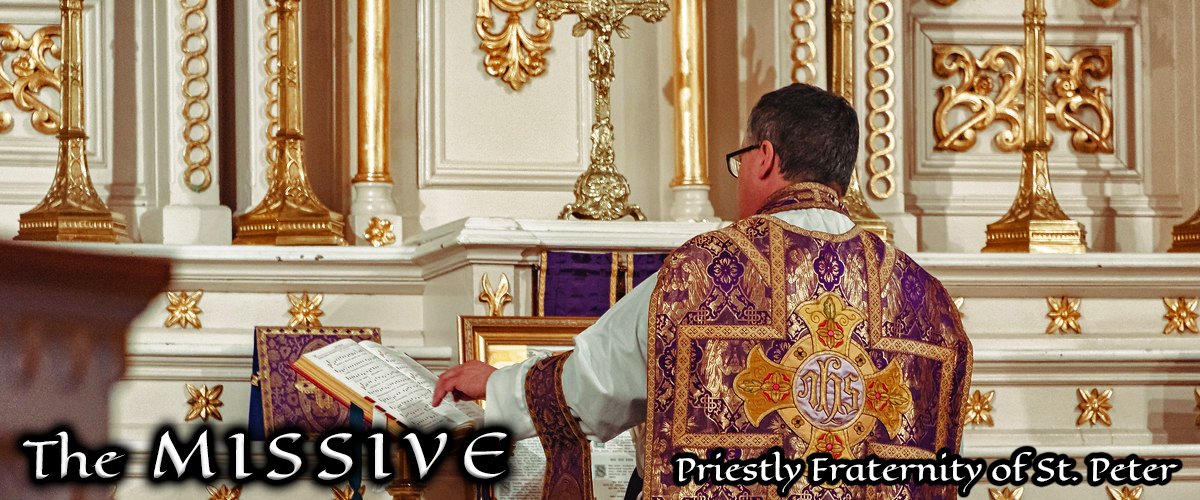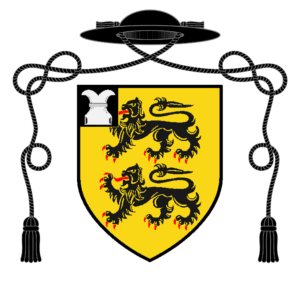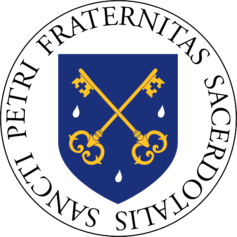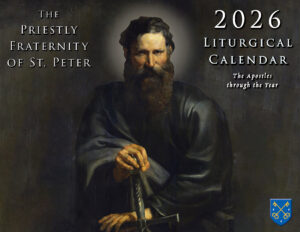Marian Masses for the Month of May
by Fr. William Rock, FSSP

Prior to Pope Pius XII instituting the Feast of the Queenship of Mary in 1954, the month of May, Mary’s month, had no universal Marian feasts. In his seminal work The Liturgical Year, Servant of God Dom Prosper Gueranger, Abbot of Solesmes, explained the situation thus:
Ever since our entrance upon the joys of the Paschal season, scarcely a day has passed without offering us some grand mystery or Saint to honour; and all these have been radiant with the Easter sun. But there has not been a single feast of our blessed Lady to gladden our hearts by telling us of some mystery or glory of this august Queen. The feast of her Seven Dolours is sometimes kept in April-that is, when Easter Sunday falls on or after the 10th of that month; but May and June pass without any special solemnity in honour of the Mother of God. It would seem as though Holy Church wished to honour, by a respectful silence, the forty days during which Mary enjoyed the company of her Jesus, after his Resurrection. We, therefore, should never separate the Mother and the Son, if we would have our Easter meditations be in strict accordance with truth-and that we surely must wish. During these forty days, Jesus frequently visits his disciples, weak men and sinners as they are: can he, then, keep away from his Mother, now that he is so soon to ascend into heaven, and leave her for several long years here on earth? Our hearts forbid us to entertain the thought. We feel sure that he frequently visits her, and that when not visibly present with her, she has him in her soul, in a way more intimate and real and delicious than any other creature could have.
No feast could have given expression to such a mystery; and yet the Holy Ghost, who guides the spirit of the Church, has gradually led the faithful to devote in an especial manner to the honour of Mary the entire month of May, the whole of which comes, almost every year, under the glad season of Easter. No doubt, the loveliness of the month would, some time or other, suggest the idea of consecrating it to the holy Mother of God; but if we reflect on the divine and mysterious influence which guides the Church in all that she does, we shall recognize, in this present instance, a heavenly inspiration, which prompted the faithful to unite their own happiness to that of Mary, and spend this beautiful month, which is radiant with their Easter joy, in commemorating the maternal delight experienced, during that same period, by the immaculate Mother when on earth.1
While there were no Marian feasts on the universal calendar during this time, Roman Missals printed in 1920 and 1943 do contain the Masses for Marian feasts kept in particular places. They are found in a special section near the back of the Missal (Missæ Pro Aliquibus Locis). On May 24th is found the Mass for the Blessed Virgin Mary under the title of Help of Christians (B. Mariæ Virg. titulo Auxilium Christianorum). May 31st has two Masses listed. The first is that of the Blessed Virgin Mary, Queen of All Saints and Mother of Fair Love (B. Mariæ Virg. Reginæ Sanctorum Omnium et Matris pulchræ dilectionis), and the second is that of the Blessed Virgin Mary, Mediatrix of All Graces2 (B. M. V. Omnium Gratiarum Mediatricis). Depending on how Easter falls in a given year, the Mass for Our Lady, Queen of the Apostles (B. Mariæ Virg. Reginæ Apostolorum), which is assigned for the Saturday after the Ascension, and the Mass of the Most Pure Heart of the Blessed Virgin Mary (Purissimi Cordis B. M. V.), which is assigned for the Saturday following the Octave of the Feast of Corpus Christi (i.e., the Saturday after the Feast of the Sacred Heart), may also fall in May.
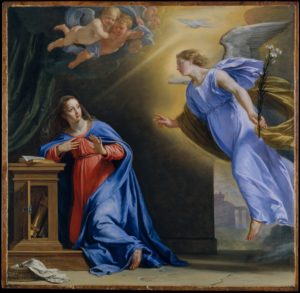
In the 1962 Roman Missal, the Mass of the Blessed Virgin Mary, Queen of All Saints and Mother of Fair Love and the Mass of the Blessed Virgin Mary, Mediatrix of All Graces are listed under May 8th along with the Mass of the Blessed Virgin Mary, Our Lady of the Sacred Heart of Jesus (Beatae Mariae Virginis D. N. a S. Corde lesu). This last is not present in the earlier two Missals. Perhaps the two Masses were moved so that they would not conflict with the newly established Feast of Our Lady’s Queenship. The Masses for the Blessed Virgin Mary under the title of Help of Christians and for Our Lady, Queen of Apostles are listed as they were in the two earlier Missals. The Mass for Most Pure Heart of the Blessed Virgin Mary is no longer listed.
For the sake of completion, considering the quote above, the Missals also have two Marian Masses listed for June – the Mass of the Blessed Virgin Mary, Mother of Grace (B. Mariæ V. Matris de Gratia) on June 9th, and the Mass of Our Lady of Perpetual Help (B. Mariæ Virg. de Perpetuo Succursu) on June 27th.
All of these Masses are proper, except for the Mass of Our Lady, Help of Christians which, while it has proper orations, uses the common of feasts of the Blessed Virgin Mary and the Mass of Our Lady, Mother of Grace, which, except for a proper collect, is the Mass of the Feast of the Holy Name of Mary (September 12th). As such, a treatment of all of the texts of each of these Masses would be burdensome for a single article. However, an investigation into their respective Gospels would be fruitful.
The Gospel for the Mass of Our Lady, Help of Christians is Luke 11:27-28: “as Jesus spoke to the crowd, a certain woman from the crowd, lifting up her voice, said to him: Blessed is the womb that bore thee and the paps that gave thee suck. But he said: Yea rather, blessed are they who hear the word of God and keep it.” Here, Our Lord is explaining that His Mother’s supernatural relationship with Him is more important than, and is the foundation for, her physical motherhood. As this Gospel is, as was stated above, taken from the common, it was not specifically chosen for this feast.

The Gospel for the Mass of the Most Pure Heart of the Blessed Virgin Mary is fittingly Luke 2:48-51, the finding of the Lord in the Temple, where it is related that Mary “kept all these words in her heart.” Luke 1:26-38, the Annunciation, where the Archangel Gabriel declared Our Lady “full of grace” who would conceive and give birth to “the Son of God,” is the Gospel for the Mass of Our Lady of Grace. The connection between the Angel’s announcement and this particular Marian title is found in the collect which states that God bestowed the grace of restoration on the human race by means of the fruitful virginity of Blessed Mary (Deus, qui humano generi beatæ Mariæ virginitate foecunda reparationis gratiam contulisti: concede). The Mass of Mary’s Queenship is also the account of the Annunciation but ending at verse 33 as verses 32-33 proclaim the kingship of Our Lord and, thus implicitly, the queenship of Our Lady.
The Gospel of the Mass of the Blessed Virgin Mary, Our Lady of the Sacred Heart of Jesus recounts the miracle at the wedding feast at Cana (Joh 2:1-11). This Gospel reading, where Our Lord provided miraculous wine at the request of His Mother, matches well with the collect which asks that by the intercession of her heart, we may receive the riches of Christ’s Heart (Domine lesu Christe, qui, beata Maria Virgine intercedente, in nos divitias Cordis tui dignaris effundere…), for according to Cornelius a Lapide’s commentary on this event, “wine is the most fitting symbol of the grace, charity, devotion, fervour, strength, with which Christ endues His own.”
The rest of these Masses have John 19:25-27 assigned as their Gospels:
There stood by the cross of Jesus, his mother and his mother’s sister, Mary of Cleophas, and Mary Magdalen. When Jesus therefore had seen his mother and the disciple standing whom he loved, he saith to his mother: Woman, behold thy son. After that, he saith to the disciple: Behold thy mother. And from that hour, the disciple took her to his own.

This Gospel pericope, which is part of St. John’s Passion proclaimed on Good Friday, is also used in the Saturday Mass of Our Lady during Paschaltide (but not, however, in any of the other Saturday Masses of Our Lady). By the use of these verses for these Paschal Marian Masses, the Church would have us return to that moment when Our Lord, about to expire on the Cross, entrusted each of the faithful to His Mother in the person of the unnamed Beloved Disciple (which tradition identifies as the Apostle John). By this, the Church teaches the faithful that the foundation of Mary as Queen of All Saints, as the Mediatrix of All Graces, as the Queen of the Apostles, and as Our Lady of Perpetual Help is her offering of her Son back to God the Father as He hung upon the Cross and her accepting the faithful as her adopted children. Even her joy at being with her risen Son during these days find their roots in this scene. For if there were no crucifixion, there could not be the joy which follows.
Fr. William Rock, FSSP was ordained in the fall of 2019 and is currently assigned to Regina Caeli Parish in Houston, TX.
In support of the causes of Blessed Maria Cristina, Queen, and Servant of God Francesco II, King
- Guéranger, Prosper. The Liturgical Year, vol. 8 (Paschal Time, Book II). Trans. Shepherd, Laurence. (Fitzwilliam: Loreto Publications, 2000), pp 537-538.
- According to Ott [2018] (p. 229): “Mary is designated mediatrix of all graces in a double sense: 1. Mary gave the Redeemer, the Source of All graces, to the world, and in this way she is the channel of all graces.” [Sent. certa.]; 2. Since Mary’s Assumption into Heaven no grace is conferred on man without her actual intercessory cooperation. [Sent. pia et probabilis.]”
May 21, 2024

